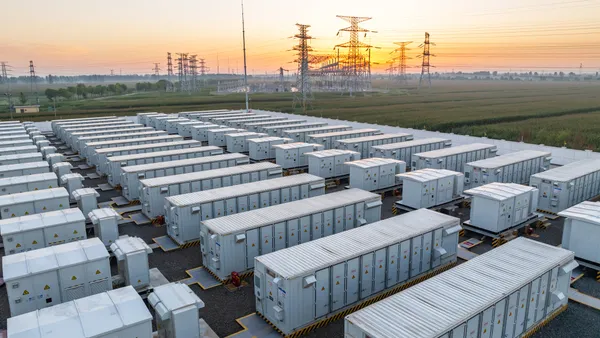Dive Brief:
- Washington state utility Puget Sound Energy and energy storage developer Form Energy have entered into a memorandum of understanding to look into deploying a multiday energy storage system in the utility’s footprint, the two companies announced last week.
- The collaboration will explore the potential of deploying a 10-MW, 100-hour energy storage pilot in PSE’s service territory — tentatively scheduled to be deployed by the end of 2026 — using Form Energy’s iron-air battery technology.
- Compared to current commercially available batteries, which largely provide about four hours of power, multiday storage technology can help offset the need for PSE to build additional generation resources used only during times of high demand, utility spokesperson Andrew Padula said in an email.
Dive Insight:
Washington law requires the state’s electric utilities to entirely abandon coal by 2025, achieve carbon neutrality by 2030, and use 100% renewable and non-emitting resources by 2045. For utilities looking to replace dispatchable fossil fuel generation, as well as meet the growing demand for electricity from electric vehicles and other end uses, energy storage is emerging as a key solution.
For PSE, this means having more new, non-emitting generation resources by 2030 than it has acquired in its 150-year history, Padula said. The utility’s most recent integrated resource planning progress report indicates it will need 1,000 MW of standalone energy storage by 2030, along with large amounts of wind and solar resources, he added.
Form Energy’s iron-air battery technology — which provides durations of up to 100 hours — would allow the utility to discharge the battery during winter peaking events, when intermittent resources like wind and solar may not be generating, Padula added.
Form Energy’s technology uses a process called reversible rusting, whereby the system discharges by absorbing oxygen and converting iron into rust and charges by using an electrical current to convert the rust into iron. Other utilities and jurisdictions have also shown interest in the technology — in December, California regulators awarded the company $30 million to build a 5 MW/500 MWh battery storage project at a Pacific Gas & Electric substation, expected to come online by the end of 2025.
New York Gov. Kathy Hochul, D, in August gave Form Energy a $12 million grant to build a 10 MW/1,000 MWh demonstration project in the state, which the company expects will be online in 2026. And in July, regulators in Minnesota approved a plan to build a 10 MW/1,000 MWh Form Energy iron-air battery system for Xcel Energy’s Minnesota utility. That project is expected online by the end of 2025, and will be coupled with as much as 710 MW of solar at the site of a retiring coal plant.
Now that the memorandum of understanding has been signed, PSE will focus on siting the battery and working with Form Energy to finalize the commercial terms and next steps of the project, Padula said. Once PSE and Form Energy come up with an initial project configuration, PSE will work to determine siting, interconnection, contracting and permitting solutions, as well as negotiate agreements for battery supply; engineering, procurement and construction; and operation and maintenance, he added.















